Fiji Flag Meaning
A light blue field with the Union Jack in the canton and Fiji's coat of arms on the fly side, representing the Pacific Ocean, British heritage, and the agricultural and maritime traditions of this island nation.
- Continent
- Oceania
- Adopted
- 1970
- Ratio
- 1:2
- Colors
- light blue, red, white, blue
- Designer
- Robi Wilcock
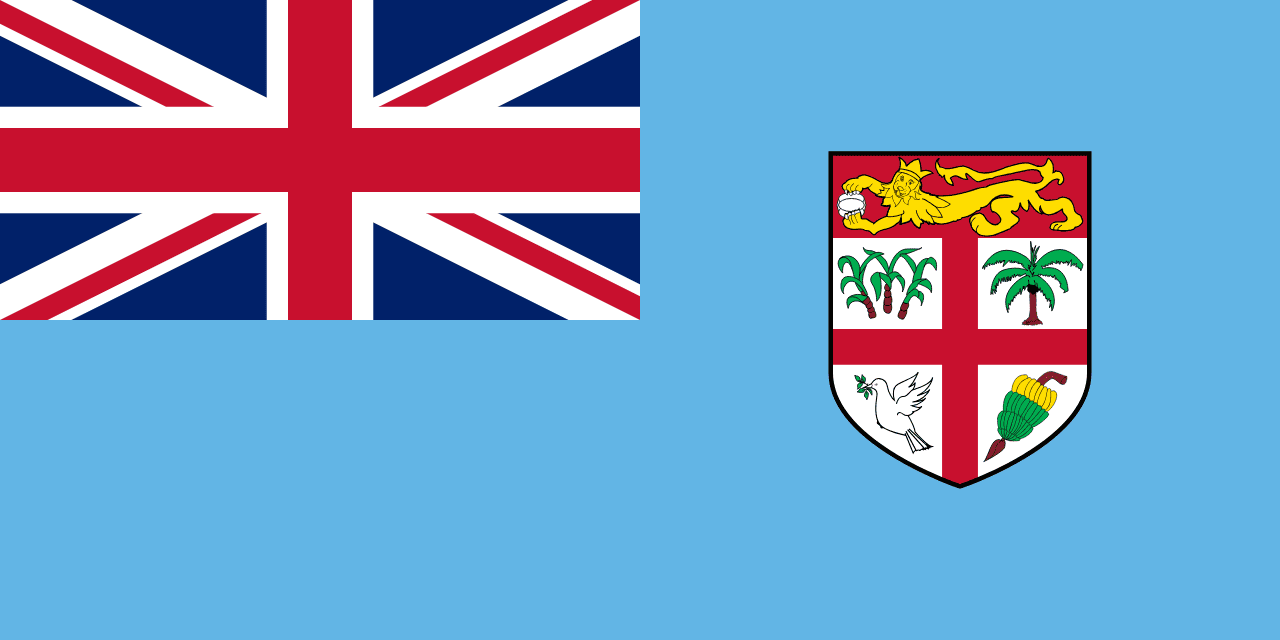
Symbolism
Light Blue Field: Represents the Pacific Ocean that surrounds the Fijian islands and the tropical skies above, symbolizing the maritime heritage of the Fijian people and their deep connection to the sea for fishing, transportation, and cultural identity.
Union Jack: Represents Fiji's historical ties to Britain and membership in the Commonwealth, symbolizing the colonial heritage and the Westminster parliamentary system that forms the basis of Fijian democratic governance.
Coat of Arms: Features a Fijian outrigger canoe, sugar cane, coconut palm, bananas, and a dove with an olive branch, symbolizing the maritime culture, agricultural economy, and desire for peace that characterize modern Fiji.
History
- Pre-1643: Melanesian and Polynesian peoples settled the islands over 3,500 years ago, developing sophisticated seafaring cultures, complex chieftain systems, and unique artistic traditions adapted to the tropical Pacific environment.
- 1643-1874: European contact began with Dutch explorer Abel Tasman, followed by British Captain James Cook, leading to increasing European influence through missionaries, traders, and beachcombers who introduced Christianity and Western goods.
- 1871-1874: Paramount Chief Cakobau offered to cede Fiji to Britain to resolve debts and conflicts, leading to negotiations that resulted in the establishment of British colonial rule over the islands.
- October 10, 1874: Fiji became a British Crown Colony through the Deed of Cession, with the Union Jack representing colonial authority while traditional Fijian social structures were partially preserved under indirect rule.
- 1879-1916: British colonial administration brought indentured laborers from India to work sugar plantations, creating the multi-ethnic society that characterizes modern Fiji with indigenous Fijians, Indo-Fijians, and other groups.
- 1960s: The independence movement grew under leaders like Ratu Sir Kamisese Mara, with negotiations for self-government and the development of national symbols in preparation for independence.
- October 10, 1970: Fiji gained independence from Britain, adopting the current flag design to represent the new sovereign nation while maintaining ties to the Commonwealth and British parliamentary traditions.
- 1987-2014: Fiji experienced multiple military coups driven by ethnic tensions between indigenous Fijians and Indo-Fijians, with the flag representing hopes for stability and democratic governance during periods of political upheaval.
- 2014-Present: Democratic elections restored civilian rule under Prime Minister Frank Bainimarama, with the flag representing efforts to build an inclusive, multi-ethnic democracy and sustainable economic development.
Trivia
- Fiji consists of over 330 islands, of which only about 110 are permanently inhabited, making it one of the most dispersed island nations in the Pacific.
- The flag represents the birthplace of Fiji Water, which is sourced from an artesian aquifer deep beneath the ground and has become a globally recognized premium brand.
- Fiji is the only country where Hinduism, Christianity, and Islam are all significant religions, reflecting its diverse population of indigenous Fijians, Indo-Fijians, and other groups.
- The flag flies over a country that is home to some of the world's best soft coral reefs, making it a premier destination for scuba diving and marine conservation.
- Rugby is the national sport, and Fiji's rugby sevens team has dominated international competition, winning Olympic gold in 2016 and multiple World Cup titles.
- Fiji is located near the International Date Line, making it one of the first countries to experience each new day and new year.
- The flag represents a country where 'Bula' (hello/life) is more than a greeting - it embodies the Fijian philosophy of living life to the fullest with warmth and hospitality.
- Kava (yaqona) ceremonies are central to Fijian culture, with this traditional root-based drink playing important roles in social, religious, and political gatherings.
- Fiji has more than 1,000 species of fish and is home to unique wildlife including the Fiji banded iguana, found nowhere else in the world.
- The flag flies over a country that has been carbon-negative since 2009, making it one of only three countries in the world to absorb more carbon than it produces.
- Suva, the capital, is the largest urban center in the South Pacific islands and serves as a regional hub for international organizations and businesses.
- Fiji's flag represents a country where traditional Fijian society is organized around chiefs (Turaga) and clans (Mataqali), maintaining indigenous governance structures alongside modern democracy.
- The Mamanuca and Yasawa island groups are popular filming locations, with movies like 'Cast Away' and 'The Blue Lagoon' showcasing Fiji's pristine tropical beauty.
- Fiji has a unique dual land tenure system where about 90% of land is owned by indigenous Fijian communities, while only 10% is freehold, protecting traditional ownership.
- The flag represents a country that pioneered sustainable tourism in the Pacific, with many resorts implementing coral restoration programs and marine protected areas.
Related Countries
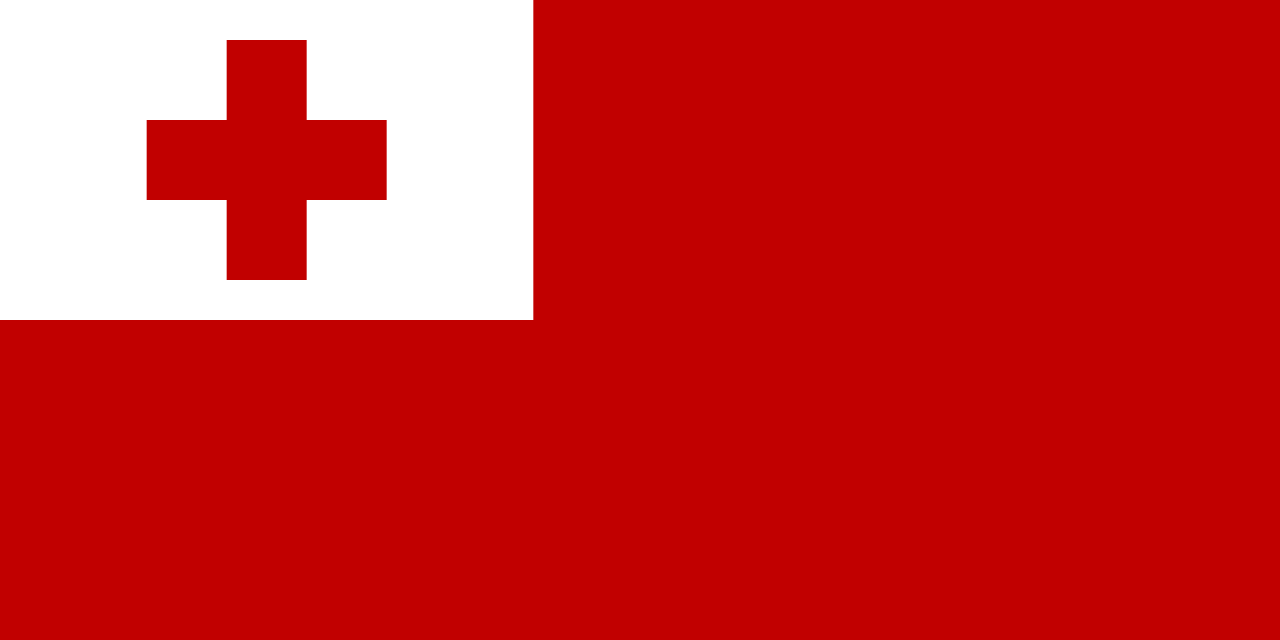
Tonga
Oceania
A red field with a white canton containing a red cross, representing the blood of Christ and the sacrifice of Jesus for mankind, the purity of Christian faith, and the deeply Christian identity of the Kingdom of Tonga as a Pacific island nation that was never colonized.
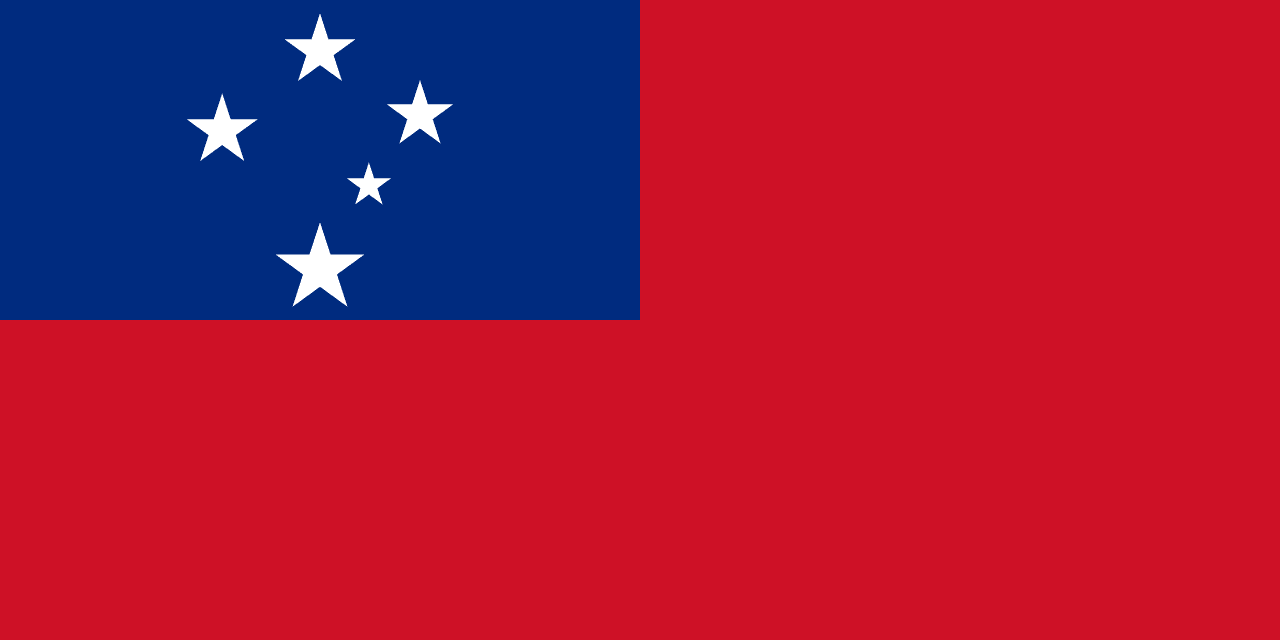
Samoa
Oceania
A red field with a blue rectangle in the upper hoist containing the Southern Cross constellation in white. The flag reflects Samoan heritage and its place in the South Pacific.
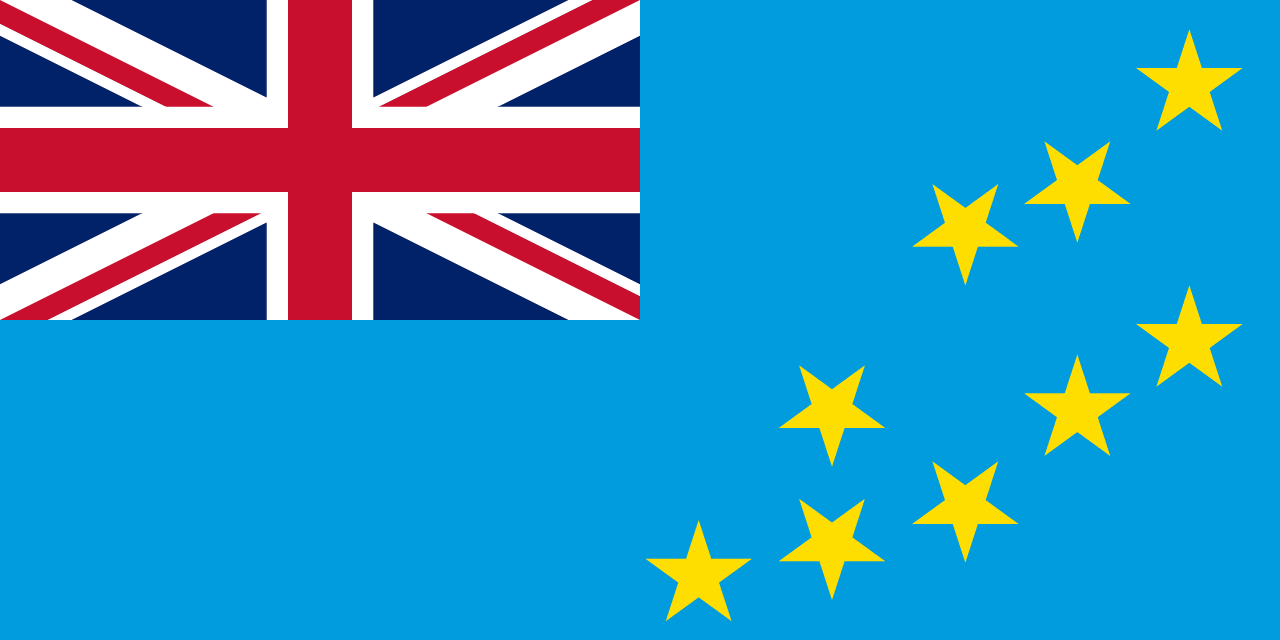
Tuvalu
Oceania
A light blue field with the Union Jack in the canton and nine yellow stars representing the nine atolls of Tuvalu, symbolizing the Pacific Ocean that surrounds the islands, the historical connection to Britain, and the geographical arrangement of the island nation in the central Pacific.
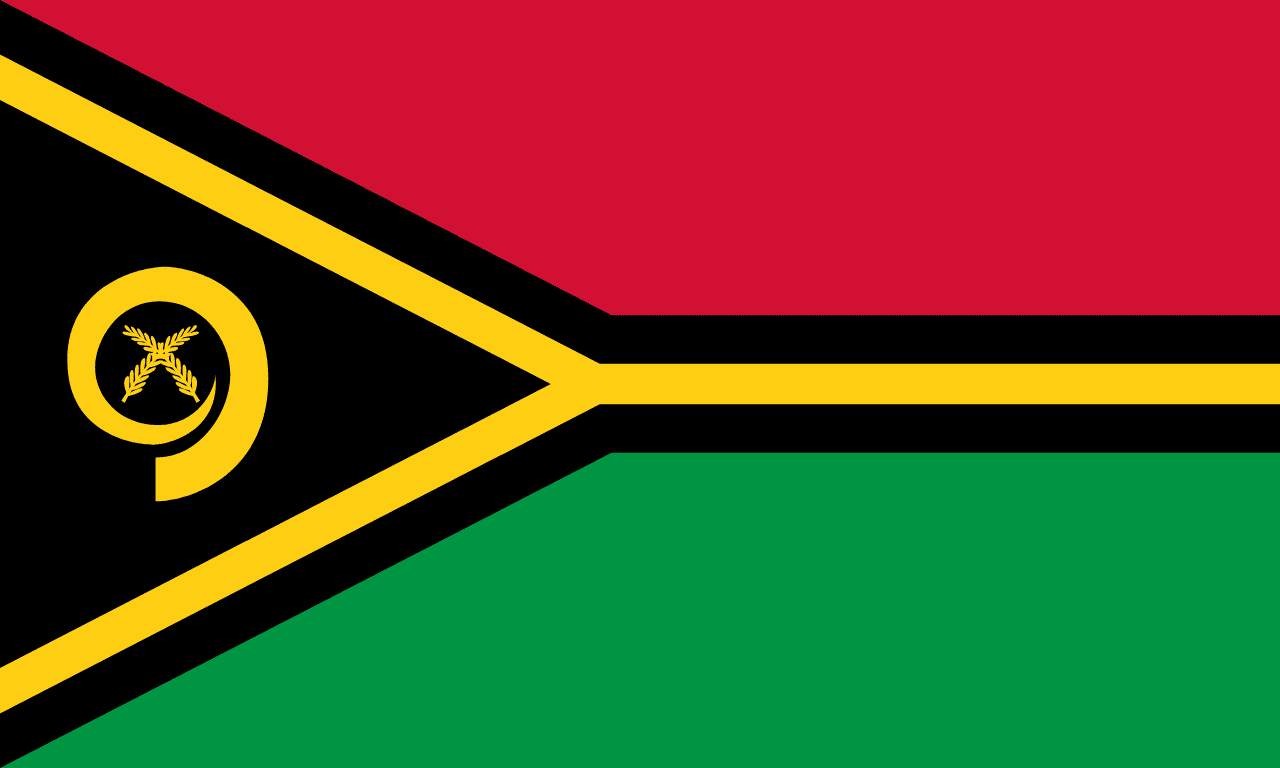
Vanuatu
Oceania
Red and green horizontal bands separated by a black stripe edged in yellow, with a yellow Y-shape extending from the hoist containing a boar's tusk and two crossed fern leaves, representing the blood of sacrifice, the rich soil, the Melanesian people, enlightenment, and traditional Melanesian values and culture.
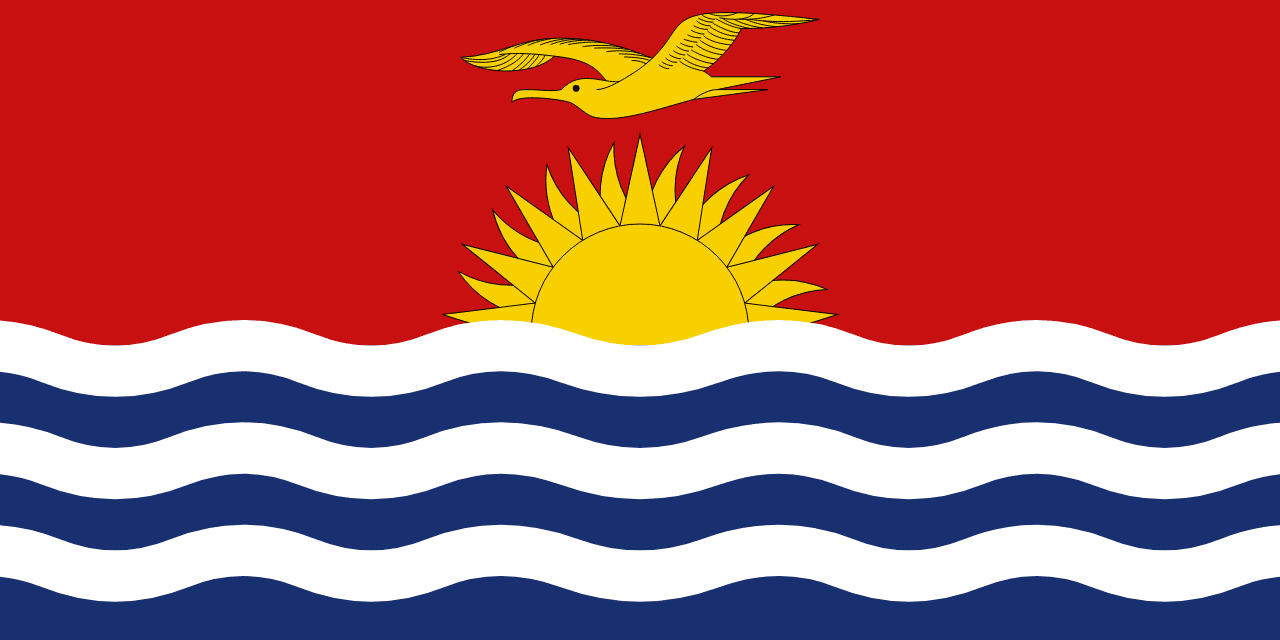
Kiribati
Oceania
A red upper field with a golden frigatebird flying over a rising sun above blue and white wavy stripes, representing the Pacific sunrise, ocean waves, and the unique geography of this coral atoll nation spread across the international dateline.
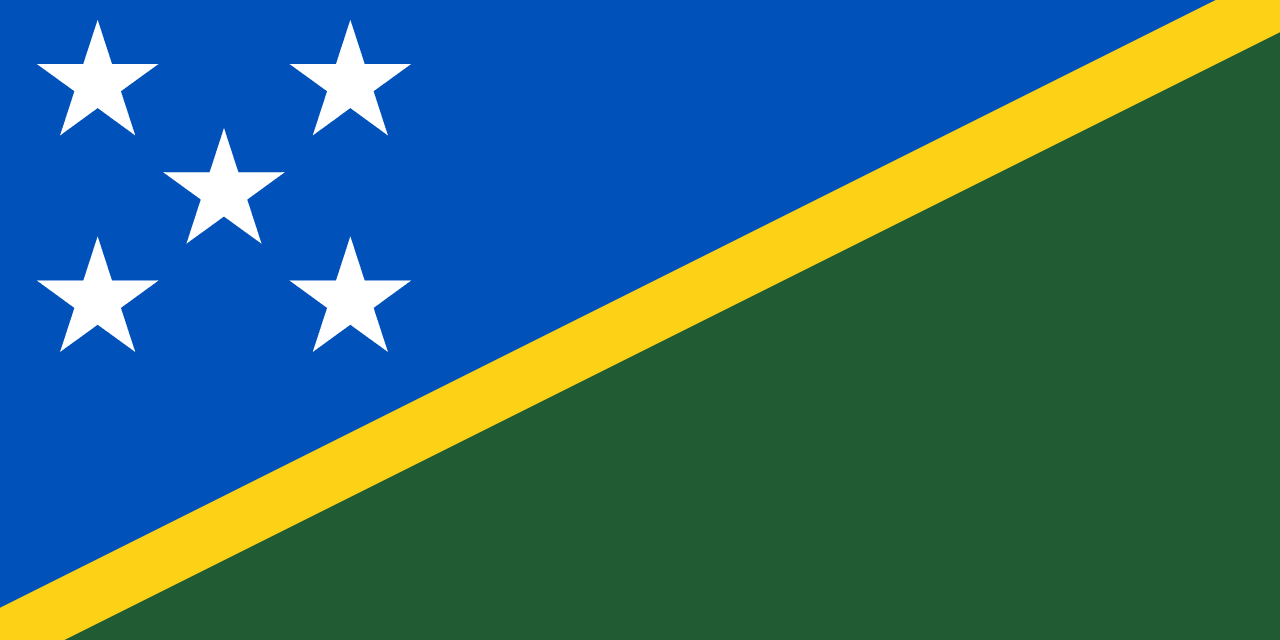
Solomon Islands
Oceania
A blue triangle in the upper hoist and green triangle in the lower fly, separated by a thin yellow diagonal stripe, with five white five-pointed stars arranged in an X pattern in the blue triangle, representing the ocean, land, sunshine, and the five main island groups of this Melanesian nation.